"Businessmen, they drink my wine, plowmen dig my earth..." But at least they didn't steal Bob Dylan's art. Too bad the same can't be said for Dylan when it came to liberating other artists' work. Since a show of his paintings recently opened at Manhattan's Gagosian Gallery, it's come to the art world's attention that these pictures may not be on the up and up.
The show in question is simply called "The Asia Series." Based on the musician's recent trip to the Far East, the work was billed as a reflection on what he saw and felt. However, the imagery in the actual paintings has been directly linked to the work of various photographers, including Henri Cartier-Bresson. Truth be known, Dylan's pictures reproduce the photos verbatim. This is not what the art experience is supposed to be about.
While some may claim his usage of photographs can be linked to the Photorealist movement, Dylan is cutting corners. During the late 1960s and early 1970s, a new art movement was launched; Photorealism. Artists, including Chuck Close, Richard Estes, and Charles Bell, relied on photographs as springboards to create their paintings. But these Photorealists took their own photographs. So in essence, even though these artists "copied" photographs, they were still capturing their initial vision. In Estes's case, he focused on the urban landscape and how reflections, which appeared in storefront windows, twisted and distorted themselves into highly abstract compositions. Charles Bell painted close-ups of gumball machines and their contents; multi-color spheres interspersed with the occasional toy surprise. Chuck Close mined facial portraiture, exposing with excruciating detail the sitter's pores, freckles, and wrinkles. These works provided the viewer with a fresh look at the visual world that surrounds us. Great art gets you to view your environment in new ways. When that occurs, you feel alive.
What Bob Dylan did was take someone else's photograph, copy the imagery onto a canvas, and then pass it off as a genuine creative gesture. Yes, in theory, Dylan did bring some of himself to the work by the physical act of painting the pictures. Still, there's nothing authentic about not thinking for yourself. Whether it was laziness or lack of confidence in his ability to crossover from one creative field to another, a la Julian Schnabel, Dylan couldn't come up with his own iconography.
It's hard to make good art. Works of art, that survive the test of time, are made by painters who perfect their craft over decades and have something original to say that reflects their life experiences and the times they live in. At the end of the day, it's about fabricating work that has a soul. Until Bob Dylan is prepared to put the same effort into his painting, that he has put into his indisputably brilliant music, better that he stick to his song-writing. As he once so famously stated, "To live outside the law, you must be honest."
Sunday, October 16, 2011
Saturday, November 28, 2009
ARTIST UNBOUND
by Richard Polsky
Imagine making it to the top of the heap in your chosen profession. Think about all of the blood, sweat and tears that went into that arduous climb to the peak. Ponder all of the setbacks that you experienced as you struggled to learn from your mistakes and improve your craft. Now contemplate what it would have been like to have trained as a painter at Yale, but become an author who went on to write a book that sold over 160,000 hardcover copies (The Martini). From there you went on to other literary successes, but at some point decided you wanted a bigger challenge. You wanted to paint again. Welcome to the world of Barnaby Conrad III.

With the opening of his first solo show in New York, titled “The Aquatic Life,” on the Upper East Side at M. Sutherland Fine Arts, Conrad’s creative life has come full circle. The exhibition itself is a provocative display of slightly surrealist imagery that depicts the marine life Conrad observed this past summer at his home in Virginia, along the Eastern Shore. Conrad turned his attention to the physical beauty of the area, finding inspiration in the region’s water world, especially its blue crabs. In reality, these crustaceans and their pleasing forms provide an excuse for Conrad to explore formal painting concerns -- namely color, structure and psychological content. But they are also metaphors for his profound respect of the great outdoors and all of its natural wonders.

There’s one painting in particular that hints strongly at Conrad’s potential as a painter. Blue Crabs, Male and Female #2 radiates energy, as linear sonic waves seem to pulsate from the two crabs. Are they mating? Trying to escape a fisherman’s net? Or are they simply caught up in the maelstrom of their watery existence?

As I continued to walk through the show, I also come upon a number of leaping trout, which focused on the painter’s love of fly fishing, and called to mind past travel adventures that he still savors (see his book Ghost Hunting in Montana).

But while I was looking at the artworks, I found myself asking a greater question. Namely, how does someone who found success in one creative field try his hand in an equally competitive arena, while setting the bar high? In other words, how do you go from a career as a writer, with plenty of accolades, sales, and big-time publishers, to being taken seriously as a painter in the competitive New York art world?

Being married to an art dealer certainly helps -- Conrad wisely wed the lovely Martha Sutherland several years ago. But a more serious answer may be found in considering the lives of other creative people who succeeded at what Conrad is trying to accomplish. The first to come to mind is Julian Schnabel. As we all know, he emerged as an art world superstar during the 1980s, becoming as famous for his plate-encrusted paintings as for his statements of braggadocio, such as the classic, “I’m the closest you’ll come to Picasso in this lifetime.” While Schnabel’s paintings, even at their best, hardly fulfilled that boast, there was something to his work.

Then Schnabel got involved with filmmaking, directing the surprisingly good movie Basquiat. While the story contained a number of inaccuracies, such as Schnabel leading the viewer to believe that he was tight in real life with Jean-Michel Basquiat, the movie showed a promising start as a director. At the time of Basquiat’s release, Schnabel took a lot of flack for crossing-over into film. My suspicion is Conrad may face the same skeptical attitude, and have to defend his decision to paint. But then Schnabel went on to direct Before Night Falls, which garnered all sorts of international acclaim and awards. Suddenly, critics were not only fawning over him as a filmmaker, but they were also praising his paintings. Julian Schnabel was finally seen as a true artist. It wouldn’t surprise me that by the time of Conrad’s second show -- Modernism Gallery in San Francisco is giving serious thought to exhibiting his next body of work -- that the art world begins to view him with the same rose-colored glasses as the literary scene.

Another example of a crossover artist that springs to mind is Peter Coyote. Long known as an actor, and for narrating various Ken Burns documentaries, Coyote found himself writing a memoir (in 1998) called Sleeping Where I Fall. The book was terrific. The former Peter Cohen came across as an original voice, spinning yarns about his ‘60s counterculture lifestyle in San Francisco. The success of the book also led to a greater appreciation of Coyote’s acting skills. Once again, I see a correlation with Conrad’s paintings leading to increased respect for his writing, including his first serious stab at fiction, The Bachelor’s Progress, a novel that is currently being shopped. And then of course, there’s Andy Warhol, the ultimate example of a great artist who parlayed his accomplishments as a painter into virtually every creative endeavor that he chose: film (Chelsea Girls, etc.), music (the Velvet Underground) and publishing (Interview). While it’s obviously a stretch to suggest that Conrad (or anyone for that matter) can ultimately match what Warhol achieved, it does illuminate the wisdom of risking his standing as an acclaimed author to swim in the deep end and follow his heart by exhibiting his paintings.

RICHARD POLSKY is the author of the recently released book on the art world, I Sold Andy Warhol (too soon).
Imagine making it to the top of the heap in your chosen profession. Think about all of the blood, sweat and tears that went into that arduous climb to the peak. Ponder all of the setbacks that you experienced as you struggled to learn from your mistakes and improve your craft. Now contemplate what it would have been like to have trained as a painter at Yale, but become an author who went on to write a book that sold over 160,000 hardcover copies (The Martini). From there you went on to other literary successes, but at some point decided you wanted a bigger challenge. You wanted to paint again. Welcome to the world of Barnaby Conrad III.

With the opening of his first solo show in New York, titled “The Aquatic Life,” on the Upper East Side at M. Sutherland Fine Arts, Conrad’s creative life has come full circle. The exhibition itself is a provocative display of slightly surrealist imagery that depicts the marine life Conrad observed this past summer at his home in Virginia, along the Eastern Shore. Conrad turned his attention to the physical beauty of the area, finding inspiration in the region’s water world, especially its blue crabs. In reality, these crustaceans and their pleasing forms provide an excuse for Conrad to explore formal painting concerns -- namely color, structure and psychological content. But they are also metaphors for his profound respect of the great outdoors and all of its natural wonders.

There’s one painting in particular that hints strongly at Conrad’s potential as a painter. Blue Crabs, Male and Female #2 radiates energy, as linear sonic waves seem to pulsate from the two crabs. Are they mating? Trying to escape a fisherman’s net? Or are they simply caught up in the maelstrom of their watery existence?

As I continued to walk through the show, I also come upon a number of leaping trout, which focused on the painter’s love of fly fishing, and called to mind past travel adventures that he still savors (see his book Ghost Hunting in Montana).

But while I was looking at the artworks, I found myself asking a greater question. Namely, how does someone who found success in one creative field try his hand in an equally competitive arena, while setting the bar high? In other words, how do you go from a career as a writer, with plenty of accolades, sales, and big-time publishers, to being taken seriously as a painter in the competitive New York art world?

Being married to an art dealer certainly helps -- Conrad wisely wed the lovely Martha Sutherland several years ago. But a more serious answer may be found in considering the lives of other creative people who succeeded at what Conrad is trying to accomplish. The first to come to mind is Julian Schnabel. As we all know, he emerged as an art world superstar during the 1980s, becoming as famous for his plate-encrusted paintings as for his statements of braggadocio, such as the classic, “I’m the closest you’ll come to Picasso in this lifetime.” While Schnabel’s paintings, even at their best, hardly fulfilled that boast, there was something to his work.

Then Schnabel got involved with filmmaking, directing the surprisingly good movie Basquiat. While the story contained a number of inaccuracies, such as Schnabel leading the viewer to believe that he was tight in real life with Jean-Michel Basquiat, the movie showed a promising start as a director. At the time of Basquiat’s release, Schnabel took a lot of flack for crossing-over into film. My suspicion is Conrad may face the same skeptical attitude, and have to defend his decision to paint. But then Schnabel went on to direct Before Night Falls, which garnered all sorts of international acclaim and awards. Suddenly, critics were not only fawning over him as a filmmaker, but they were also praising his paintings. Julian Schnabel was finally seen as a true artist. It wouldn’t surprise me that by the time of Conrad’s second show -- Modernism Gallery in San Francisco is giving serious thought to exhibiting his next body of work -- that the art world begins to view him with the same rose-colored glasses as the literary scene.

Another example of a crossover artist that springs to mind is Peter Coyote. Long known as an actor, and for narrating various Ken Burns documentaries, Coyote found himself writing a memoir (in 1998) called Sleeping Where I Fall. The book was terrific. The former Peter Cohen came across as an original voice, spinning yarns about his ‘60s counterculture lifestyle in San Francisco. The success of the book also led to a greater appreciation of Coyote’s acting skills. Once again, I see a correlation with Conrad’s paintings leading to increased respect for his writing, including his first serious stab at fiction, The Bachelor’s Progress, a novel that is currently being shopped. And then of course, there’s Andy Warhol, the ultimate example of a great artist who parlayed his accomplishments as a painter into virtually every creative endeavor that he chose: film (Chelsea Girls, etc.), music (the Velvet Underground) and publishing (Interview). While it’s obviously a stretch to suggest that Conrad (or anyone for that matter) can ultimately match what Warhol achieved, it does illuminate the wisdom of risking his standing as an acclaimed author to swim in the deep end and follow his heart by exhibiting his paintings.

RICHARD POLSKY is the author of the recently released book on the art world, I Sold Andy Warhol (too soon).
Friday, August 07, 2009
NINE WAYS TO MAKE MONEY IN THE ART MARKET
Last week, we looked at the many ways that careless collectors can lose money when they buy and sell works of art [see "Nine Ways to Lose Money in the Art Market," July 16, 2009]. Of course, money can also be made in the art market. It goes without saying that a true passion for art is the first requirement. That love of art helps you believe that you possess the sound judgment to pick good artists, and gives you the discipline to hang on to them -- 15 to 20 years being optimum. The bottom line is not to be greedy when it’s time to sell. Remember the sage advice supposedly given by Lord Rothschild when asked the secret of his success: "I always sold too soon."
1. Buy the program. Imagine if you had bought one work from every show at the Daniel Weinberg Gallery in Los Angeles during the late 1980s. You would have ended up with a Robert Gober (and a sink, no less), a John Chamberlain, an Eric Fischl, and a Robert Ryman. Ingratiate yourself with a dealer who has picked winners in past eras, such as Paula Cooper, or more recently David Zwirner, James Cohan, Adam Baumgold and Zach Feuer, and watch your art portfolio soar.
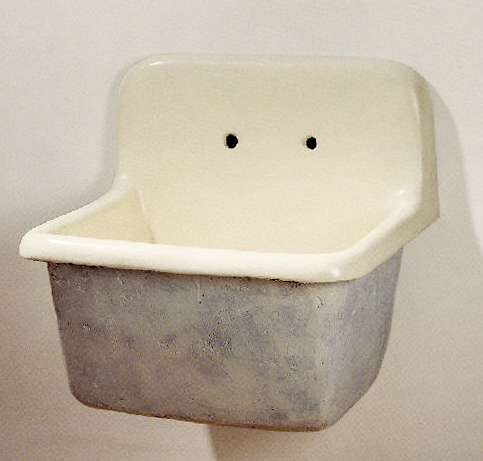
2. Sacrifice your pawn (to get to the queen). Often, to make the above strategy viable, a collector finds him- or herself having to buy a work or two by a gallery’s less celebrated artists. Many years ago, some believed that a good way to approach the Mary Boone Gallery to obtain a work by Fischl or Schnabel was to offer to buy a Gary Stephen or a Michael McClard. Even the great Leo Castelli smiled upon those seeking a Lichtenstein, Johns or Stella if they asked to buy a Cletus Boyer, Mia Westerlund Roosen or even a Keith Sonnier.
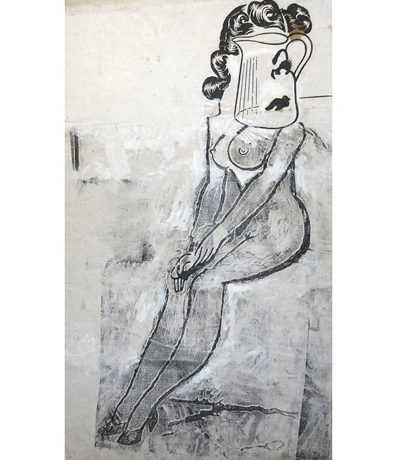
3. Buy from an artist’s estate. Be it Sam Francis or Andy Warhol, lucky are the collectors and dealers who can get close to an artist’s estate, and be able to cherry pick from the trove of paintings the artist has left behind. Estates often sell work below market for several reasons, including to avoid speculation. Their strategy is to place pictures with bona fide collectors who will hold onto the work rather than ship it off to auction. If you are lucky enough to be able to acquire pictures from an estate, handle your opportunity responsibly -- there are no second chances.
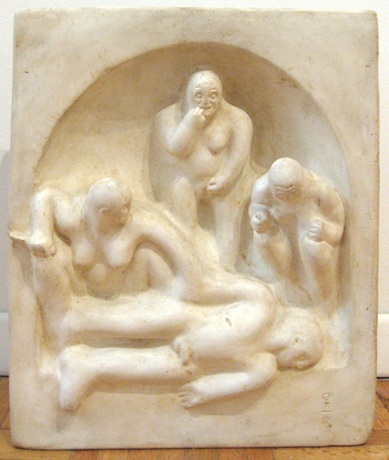
4. Buy new release prints. Even though prints are less likely to jump in value than paintings, they do offer opportunities for appreciation. And when it comes to prints it’s all about the publisher. Having a subscription to ULAE, or to a lesser extent to Gemini and Crown Point Press, insures you of the opportunity of buying prints at their IPO (initial public offering) price. Once the edition sells out, the publisher automatically raises the price.
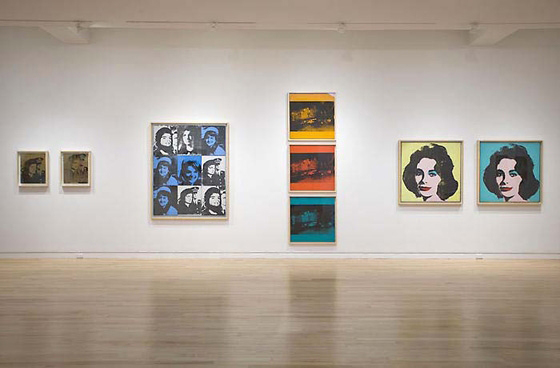
5. Buy items that pass at auction. Risky business but highly lucrative when it works. When an artwork fails to make its reserve, anyone can approach the auction house with an offer to buy it after the sale. On the negative side, the whole art world is aware the thing didn’t sell and hangs the scarlet letter "B" (for Burned) on it, claiming it was either inferior, grossly over-estimated, had dubious title or some other defect. Think independently. If you decide that it’s a quality work, go for it and make the auction house a lowball offer. If the firm accepts, not only will you have gotten a bargain, but no one will know what you paid for it. When you go to sell someday, that will prove extremely beneficial.
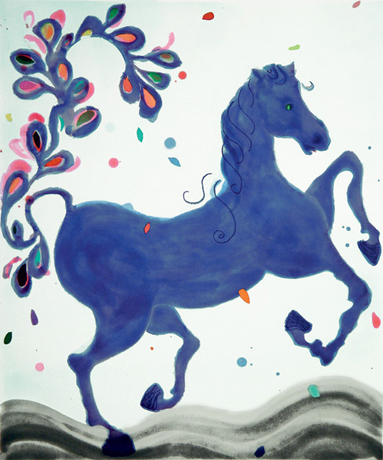
6. Buy directly from an artist’s studio. Some artists are extremely loyal to their dealers. Then there are those. . . . If you choose to work with an artist who sells direct, be aware that most of them like to be paid in cash. You’d be shocked at some of the big names who will bend the rules to pick up spending money for vacations, greens fees and fancy restaurants. Remember, I’m not advocating that you do anything illegal. Just be cool about it so neither the artist or his dealer are embarrassed. Under certain circumstances, some dealers are willing to look the other way when an artist makes deals on the side, such as Andy Warhol’s arrangement with Leo Castelli.

7. Buy pre-retrospective. If you discover that a major art world figure is about to receive a full-dress retrospective, it’s time to spring into action. There’s nothing like anticipation of a major show to put an individual artist’s work in play -- the price of a work of art always goes up on the come. If you already own a painting by the artist about to be canonized, do everything in your power to lend your work to that show -- all the better to have your painting documented, which increases its value.

8. Buy an artist who is switching galleries. Artists are human. When an opportunity to exhibit at a more important gallery comes their way, chances are they’re going to take it. Try and buy a painting before the changeover becomes official. In one recent example, Robert Bechtle jettisoned a 30-year relationship with O.K. Harris for greener pastures at Gladstone Gallery. By exhibiting at a gallery with a stronger reputation, Bechtle’s work was seen in a fresh context, which helped his prestige, to say nothing of his prices.
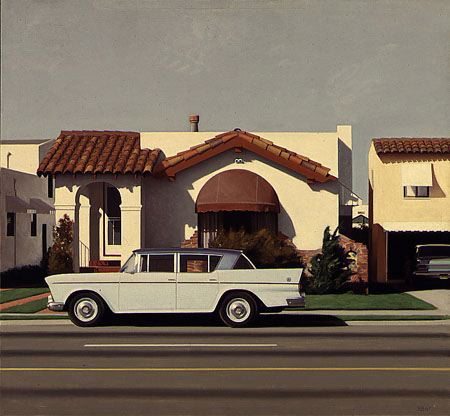
9. Piggyback a purchase on a museum trustee. If you want to make a sharp investment, just find out which artist your local museum’s trustees are currently acquiring for their personal collections. You will find that even though it’s a conflict of interest, a "value-increasing" show of that particular painter, at that particular museum, is rarely far behind. Years ago, the San Francisco Museum of Modern Art held a large survey of Sigmar Polke’s recent work. While reading the wall labels, I noticed that a good proportion of the show was owned by members of the board. What a surprise.

1. Buy the program. Imagine if you had bought one work from every show at the Daniel Weinberg Gallery in Los Angeles during the late 1980s. You would have ended up with a Robert Gober (and a sink, no less), a John Chamberlain, an Eric Fischl, and a Robert Ryman. Ingratiate yourself with a dealer who has picked winners in past eras, such as Paula Cooper, or more recently David Zwirner, James Cohan, Adam Baumgold and Zach Feuer, and watch your art portfolio soar.

2. Sacrifice your pawn (to get to the queen). Often, to make the above strategy viable, a collector finds him- or herself having to buy a work or two by a gallery’s less celebrated artists. Many years ago, some believed that a good way to approach the Mary Boone Gallery to obtain a work by Fischl or Schnabel was to offer to buy a Gary Stephen or a Michael McClard. Even the great Leo Castelli smiled upon those seeking a Lichtenstein, Johns or Stella if they asked to buy a Cletus Boyer, Mia Westerlund Roosen or even a Keith Sonnier.

3. Buy from an artist’s estate. Be it Sam Francis or Andy Warhol, lucky are the collectors and dealers who can get close to an artist’s estate, and be able to cherry pick from the trove of paintings the artist has left behind. Estates often sell work below market for several reasons, including to avoid speculation. Their strategy is to place pictures with bona fide collectors who will hold onto the work rather than ship it off to auction. If you are lucky enough to be able to acquire pictures from an estate, handle your opportunity responsibly -- there are no second chances.

4. Buy new release prints. Even though prints are less likely to jump in value than paintings, they do offer opportunities for appreciation. And when it comes to prints it’s all about the publisher. Having a subscription to ULAE, or to a lesser extent to Gemini and Crown Point Press, insures you of the opportunity of buying prints at their IPO (initial public offering) price. Once the edition sells out, the publisher automatically raises the price.

5. Buy items that pass at auction. Risky business but highly lucrative when it works. When an artwork fails to make its reserve, anyone can approach the auction house with an offer to buy it after the sale. On the negative side, the whole art world is aware the thing didn’t sell and hangs the scarlet letter "B" (for Burned) on it, claiming it was either inferior, grossly over-estimated, had dubious title or some other defect. Think independently. If you decide that it’s a quality work, go for it and make the auction house a lowball offer. If the firm accepts, not only will you have gotten a bargain, but no one will know what you paid for it. When you go to sell someday, that will prove extremely beneficial.

6. Buy directly from an artist’s studio. Some artists are extremely loyal to their dealers. Then there are those. . . . If you choose to work with an artist who sells direct, be aware that most of them like to be paid in cash. You’d be shocked at some of the big names who will bend the rules to pick up spending money for vacations, greens fees and fancy restaurants. Remember, I’m not advocating that you do anything illegal. Just be cool about it so neither the artist or his dealer are embarrassed. Under certain circumstances, some dealers are willing to look the other way when an artist makes deals on the side, such as Andy Warhol’s arrangement with Leo Castelli.

7. Buy pre-retrospective. If you discover that a major art world figure is about to receive a full-dress retrospective, it’s time to spring into action. There’s nothing like anticipation of a major show to put an individual artist’s work in play -- the price of a work of art always goes up on the come. If you already own a painting by the artist about to be canonized, do everything in your power to lend your work to that show -- all the better to have your painting documented, which increases its value.

8. Buy an artist who is switching galleries. Artists are human. When an opportunity to exhibit at a more important gallery comes their way, chances are they’re going to take it. Try and buy a painting before the changeover becomes official. In one recent example, Robert Bechtle jettisoned a 30-year relationship with O.K. Harris for greener pastures at Gladstone Gallery. By exhibiting at a gallery with a stronger reputation, Bechtle’s work was seen in a fresh context, which helped his prestige, to say nothing of his prices.

9. Piggyback a purchase on a museum trustee. If you want to make a sharp investment, just find out which artist your local museum’s trustees are currently acquiring for their personal collections. You will find that even though it’s a conflict of interest, a "value-increasing" show of that particular painter, at that particular museum, is rarely far behind. Years ago, the San Francisco Museum of Modern Art held a large survey of Sigmar Polke’s recent work. While reading the wall labels, I noticed that a good proportion of the show was owned by members of the board. What a surprise.

NINE WAYS TO LOSE MONEY IN THE ART MARKET
With collectors being more selective than ever, it stands to reason that anyone left in the game is watching his or her cash more carefully than ever. While no one is certain how to make money in this environment, I guarantee the following examples are nine sure-fire ways to lose money.
1) Buy a mediocre painting instead of a great print. Or for that matter buy a mediocre painting rather than a great drawing. Too often collectors get caught up in art’s snob appeal. The objective is always to buy the best within your budget, regardless of medium. As wonderful a draughtsman as Jasper Johns is, not all of his drawings are up to snuff. It’s much better, from an investment standpoint, to buy one of his great prints, such as Ale Cans. There’s no doubt that it will appreciate at a faster rate than one of Johns’ murky ink-on-vellum drawings.
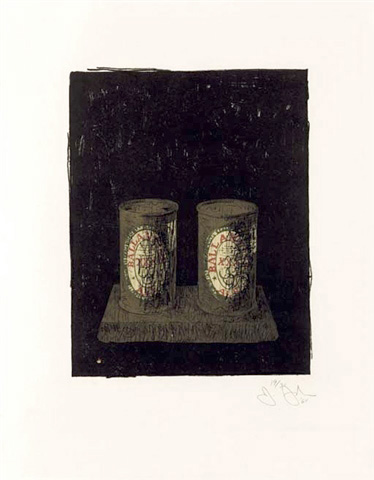
2) Let the auction houses talk down your reserve. From the auction house’s perspective, it’s all about convincing consignors to accept the lowest reserve possible. If, for instance, you put a painting up for auction and agree to a presale estimate of $600,000-$800,000, and a reserve of $600,000, you can expect a call a few days before the sale that will go something like this: "Look, we think your picture will do well, but given the economy, let’s be on the safe side and lower the reserve to $500,000."

Don’t do it. If your painting passes at $600,000, the auction house will field offers for it after the sale. Chances are the bidding stalled at $550,000, which means a potential after-sale buyer is likely to offer $500,000 (or less). If your reserve is already down to $500,000, you’ll probably be offered $400,000 (or less). The bottom line is that if you have a good painting, someone will pay up. If not, you shouldn’t have put it up for auction in the first place.
3) Accept a mere 10 percent discount from a gallery. For the purchase of works by contemporary art gods such as Brice Marden, Ellsworth Kelly and a handful of others, a buyer would be lucky to receive a 10 percent discount on any purchase from their galleries. But superstars aside, accepting a standard 10 percent off on even a successful mid-career artist is a mistake.

Galleries generally work on a 50-50 split with artists they represent. This means you should be able to get at least 20 percent off with a little negotiating. Right now, not only are galleries hurting, but so are their artists, who got used to flush times. From a dealer’s perspective, few things are worse than having an artist bug him or her for money. If for no other reason than that, galleries are likely to accept your 20 percent discount request. Try it.
4) Buy with your ears rather than your eyes. Here’s a great way to be taken to the cleaners. I’ll never forget the time the Los Angeles painter Chuck Arnoldi told me how he was at a party when Eli Broad, the country’s richest collector, came over to say hello and ended their discussion by saying, "See you at your studio."
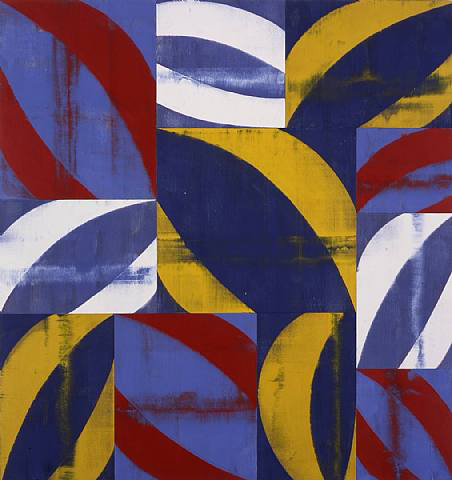
The merely rich collector Douglas Cramer overheard this snippet of conversation and immediately approached Arnoldi requesting to do the same. In this case, Arnoldi was merciful enough to tell Cramer that "nothing was afoot with his career," after which Cramer promptly canceled his studio visit. You get the idea.
5) Buy an atypical work. Another sucker bet. There always seems to be one artwork in any given show where the subject matter veers off into the ozone. If you’re buying a Wayne Thiebaud, you obviously want to buy "sugar." Even though Thiebaud is a first-rate portrait painter, the art market could care less.
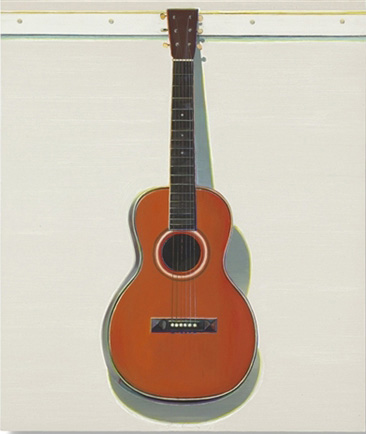
No matter how tempting one of his figurative paintings may be, or how attractive its price, treat it like drugs and just say "no." You may even decide that you genuinely like the painting regardless of market forces. But if you acquire it, when the time comes to sell, you will come to despise your "inspired" purchase when you see how difficult it is to unload at any price.

6) Buy a work from a blue-chip gallery without being properly introduced. I once dealt with a wannabe collector named Paul S. who always bragged to me about his buying trips to New York. He waxed poetic about how "Ileana" (Sonnabend) rolled out the red carpet for him and how fortunate he was to buy a Peter Halley from her.
The only problem was that it was a weak painting that had already been rejected by Sonnabend’s better customers. The point of the story is that if you want to play with the big boys (Gagosian, PaceWildenstein, Marks, etc.), you had better be damn sure that one of their top collectors recommends you. Otherwise, you’ll receive the "Paul S." treatment.
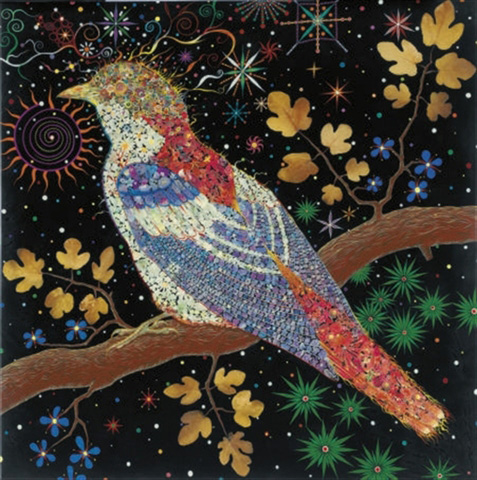
7) Buy a work by an artist who’s "in play." If you decide that you want to buy a Richard Prince "Nurse" painting, you might as well put your money into California boutique wine futures and watch them go down — at least you can drink the wine. Richard Prince "Nurses," originally offered at Gladstone in the mid-2000s, for around $85,000 to members of the "club," climbed to over $8 million in 2007 (they’ve since dropped back to under $3 million).
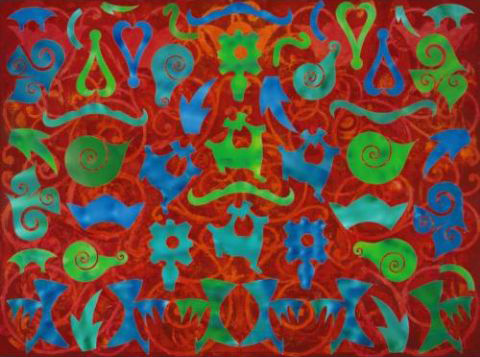
Regardless, the speculator gang that ran up his prices at auction are like an elite fraternity house that you can’t join because you aren’t cool enough (in this case substitute "rich enough") -- so don’t even bother trying. Now that Prince has run his course, the next artist "in play" appears to be Peter Doig. Ditto for staying away from his work and market. Better to be an independent thinker and put your money into an artist who’s poised for slow and steady growth -- like Fred Tomaselli, Philip Taaffe or Christopher Brown.
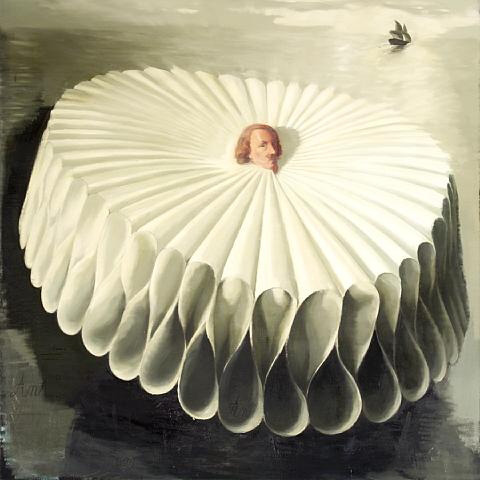
8) Buy a work right after an artist has died. One of the biggest myths in the art market is that an artist’s work shoots up in value right after his or her death. Wrong (with the exception of Warhol). Most actually go down in value. The reason is that his market usually becomes flooded, thanks to family members struggling to pay estate taxes and dealers and collectors looking to cash in. Better to wait a year or two and let the dust settle, even if you end up having to pay a bit more.
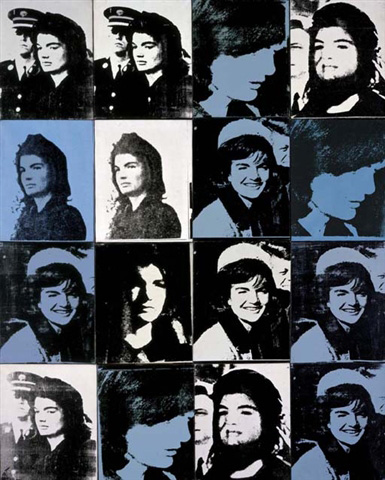
9) Buy works of unusually large scale. The late Los Angeles dealer Paul Kanter once told me, "Never buy a painting that you can’t lift." He was right. There’s nothing harder to resell than a painting that’s larger than eight feet in any dimension. Even seven feet is cutting it close. Oversize paintings become white elephants in the marketplace.
Only a small pool of potential buyers have the wall space to handle these often ego-driven paintings. If you have a substantial wall that cries out for a massive work that makes a statement, you’re better off buying two smaller works to fill the void.
1) Buy a mediocre painting instead of a great print. Or for that matter buy a mediocre painting rather than a great drawing. Too often collectors get caught up in art’s snob appeal. The objective is always to buy the best within your budget, regardless of medium. As wonderful a draughtsman as Jasper Johns is, not all of his drawings are up to snuff. It’s much better, from an investment standpoint, to buy one of his great prints, such as Ale Cans. There’s no doubt that it will appreciate at a faster rate than one of Johns’ murky ink-on-vellum drawings.

2) Let the auction houses talk down your reserve. From the auction house’s perspective, it’s all about convincing consignors to accept the lowest reserve possible. If, for instance, you put a painting up for auction and agree to a presale estimate of $600,000-$800,000, and a reserve of $600,000, you can expect a call a few days before the sale that will go something like this: "Look, we think your picture will do well, but given the economy, let’s be on the safe side and lower the reserve to $500,000."

Don’t do it. If your painting passes at $600,000, the auction house will field offers for it after the sale. Chances are the bidding stalled at $550,000, which means a potential after-sale buyer is likely to offer $500,000 (or less). If your reserve is already down to $500,000, you’ll probably be offered $400,000 (or less). The bottom line is that if you have a good painting, someone will pay up. If not, you shouldn’t have put it up for auction in the first place.
3) Accept a mere 10 percent discount from a gallery. For the purchase of works by contemporary art gods such as Brice Marden, Ellsworth Kelly and a handful of others, a buyer would be lucky to receive a 10 percent discount on any purchase from their galleries. But superstars aside, accepting a standard 10 percent off on even a successful mid-career artist is a mistake.

Galleries generally work on a 50-50 split with artists they represent. This means you should be able to get at least 20 percent off with a little negotiating. Right now, not only are galleries hurting, but so are their artists, who got used to flush times. From a dealer’s perspective, few things are worse than having an artist bug him or her for money. If for no other reason than that, galleries are likely to accept your 20 percent discount request. Try it.
4) Buy with your ears rather than your eyes. Here’s a great way to be taken to the cleaners. I’ll never forget the time the Los Angeles painter Chuck Arnoldi told me how he was at a party when Eli Broad, the country’s richest collector, came over to say hello and ended their discussion by saying, "See you at your studio."

The merely rich collector Douglas Cramer overheard this snippet of conversation and immediately approached Arnoldi requesting to do the same. In this case, Arnoldi was merciful enough to tell Cramer that "nothing was afoot with his career," after which Cramer promptly canceled his studio visit. You get the idea.
5) Buy an atypical work. Another sucker bet. There always seems to be one artwork in any given show where the subject matter veers off into the ozone. If you’re buying a Wayne Thiebaud, you obviously want to buy "sugar." Even though Thiebaud is a first-rate portrait painter, the art market could care less.

No matter how tempting one of his figurative paintings may be, or how attractive its price, treat it like drugs and just say "no." You may even decide that you genuinely like the painting regardless of market forces. But if you acquire it, when the time comes to sell, you will come to despise your "inspired" purchase when you see how difficult it is to unload at any price.

6) Buy a work from a blue-chip gallery without being properly introduced. I once dealt with a wannabe collector named Paul S. who always bragged to me about his buying trips to New York. He waxed poetic about how "Ileana" (Sonnabend) rolled out the red carpet for him and how fortunate he was to buy a Peter Halley from her.
The only problem was that it was a weak painting that had already been rejected by Sonnabend’s better customers. The point of the story is that if you want to play with the big boys (Gagosian, PaceWildenstein, Marks, etc.), you had better be damn sure that one of their top collectors recommends you. Otherwise, you’ll receive the "Paul S." treatment.

7) Buy a work by an artist who’s "in play." If you decide that you want to buy a Richard Prince "Nurse" painting, you might as well put your money into California boutique wine futures and watch them go down — at least you can drink the wine. Richard Prince "Nurses," originally offered at Gladstone in the mid-2000s, for around $85,000 to members of the "club," climbed to over $8 million in 2007 (they’ve since dropped back to under $3 million).

Regardless, the speculator gang that ran up his prices at auction are like an elite fraternity house that you can’t join because you aren’t cool enough (in this case substitute "rich enough") -- so don’t even bother trying. Now that Prince has run his course, the next artist "in play" appears to be Peter Doig. Ditto for staying away from his work and market. Better to be an independent thinker and put your money into an artist who’s poised for slow and steady growth -- like Fred Tomaselli, Philip Taaffe or Christopher Brown.

8) Buy a work right after an artist has died. One of the biggest myths in the art market is that an artist’s work shoots up in value right after his or her death. Wrong (with the exception of Warhol). Most actually go down in value. The reason is that his market usually becomes flooded, thanks to family members struggling to pay estate taxes and dealers and collectors looking to cash in. Better to wait a year or two and let the dust settle, even if you end up having to pay a bit more.

9) Buy works of unusually large scale. The late Los Angeles dealer Paul Kanter once told me, "Never buy a painting that you can’t lift." He was right. There’s nothing harder to resell than a painting that’s larger than eight feet in any dimension. Even seven feet is cutting it close. Oversize paintings become white elephants in the marketplace.
Only a small pool of potential buyers have the wall space to handle these often ego-driven paintings. If you have a substantial wall that cries out for a massive work that makes a statement, you’re better off buying two smaller works to fill the void.
Wednesday, May 27, 2009
WINNERS AND LOSERS
by Richard Polsky
The real winners at auction last week? The collectors who managed to hold on to their paintings, resisting the urge to sell during the recession. Despite every economic indicator that hard assets, such as collectibles, were going down in value, first-rate pictures by classic names held up better than expected. However, New York Times auction reporter Carol Vogel wrote that there was no reason to celebrate because the total gross sales were so much lower than those of May 2008 -- partially missing the point. Dollar volume may have been down due to lower prices, fewer lots and a pronounced absence of mega-lots. But the art that did appear sold and found its level, setting a floor for prices to eventually recover.

If you exclude works by Alexander Calder, prices in general feel like they’ve receded 33 percent from their high water mark in London in June 2007 -- a far cry from the 66 percent drop during the hellish market demise of 1990-93. While the recovery may be slow, and prices may remain at their current level for the next few years, who cares? The numbers are high enough. Besides, it allows those who have been standing on the sidelines to get back into the game. Maybe even new buyers will be attracted because the art market has stabilized.

That having been said, let’s examine some of the individual artists who fared well at the May auctions, and a few who didn’t. Remember, the real test of any market is what happens when times are difficult. Whoever retains the most value in a down market will exponentially go up the most when things improve. Conversely, the same holds true for artists who depreciate the most during a recession.
WINNERS
Cecily Brown:
When Brown’s triptych Girls Eating Birds exceeded its estimate during a mediocre sale at Sotheby’s on May 12, 2009, it only reinforced her position as a “money artist.” I’ve said it before, and I’ll say it again: Brown can flat-out paint. Her hide-and-seek figures are more than mere armatures to hang paint on -- they create a compelling narrative about relationships. Given her youth (she’s still improving), strong gallery representation (Gagosian) and consistency on the resale market, I’d be hard-pressed to find a more reliable bet.
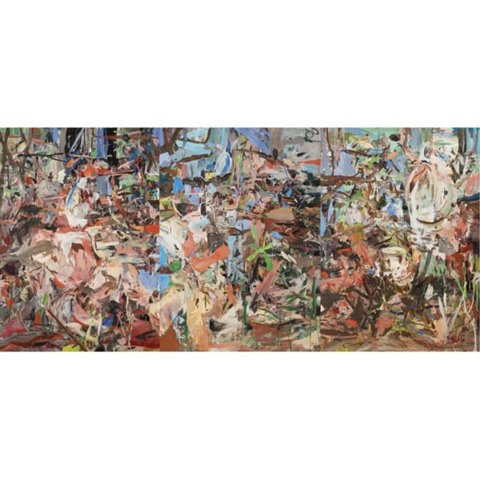
Dan Colen:
Though still unproven at auction over time, Colen is one of a handful of really young artists who might have some staying power. Witness the number of youthful dealers, as reported by the press, who pursued the unfortunately titled Untitled (Blow Me) at Sotheby’s on May 12. A seasoned collector should always be aware of what the next generation of dealers are supporting at auction. Colen is a good example.
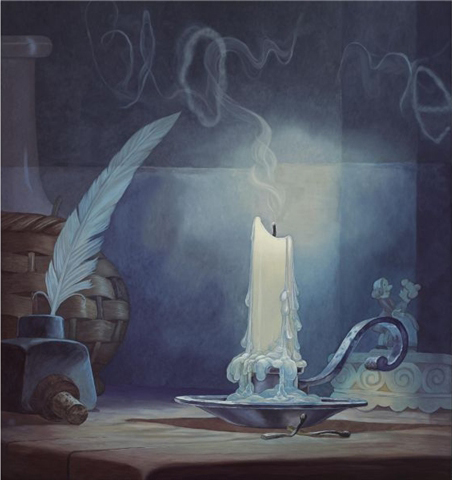
Alexander Calder:
The winner and still champion. When times get tough, the tough go shopping and buy Calder. During the 1990s recession, Calder’s prices probably held up the best. This time around, Calder exceeded expectations, creating some very happy consignors. It may be a simplistic statement, but his work appeals to all ages and levels of sophistication. Early Calders, which incorporate wooden elements, always sparkle at auction -- as was the case yet again in this week’s sales.
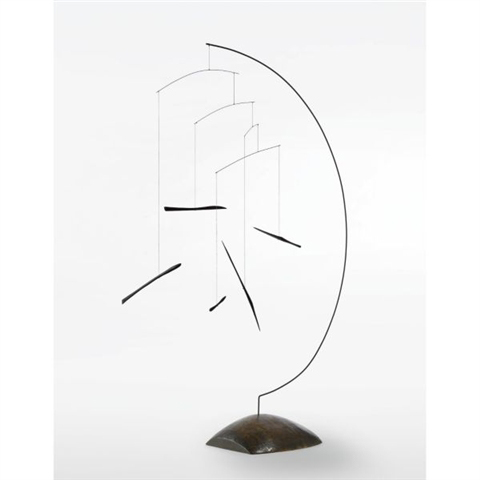
Richard Diebenkorn:
Ocean Park No. 117 represented the “perfect Diebenkorn” from his most desired series. This painting has it all: color, structure and, most important, apartment-size scale. The market responded accordingly with a huge price ($6.5 million). Diebenkorn’s work continues to look better over time. Once European collectors and curators get over their prejudice (they accuse him of being overly influenced by Matisse), and view him more as an American who absorbed Matisse, look out.

Andy Warhol:
Surprise. Though Warhol’s prices have dipped with the rest of the market, his work did well during this round of sales, despite the lack of a single star-quality painting.
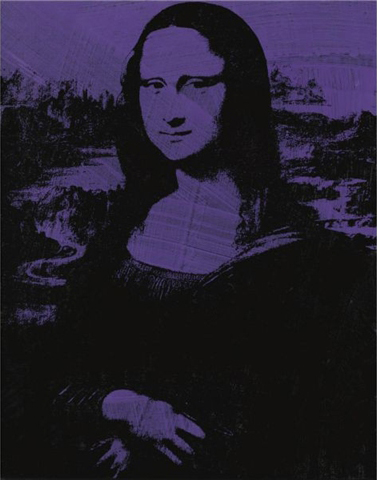
Even though some of the estimates proved aggressive, others, like that assigned to the large Gun -- estimated at $2,200,000-$2,800,000, and sold for $3,106,500 with premium -- confirmed the auction houses’ confidence. As the most widely collected artist, Warhol continues to be the most accurate market gauge, when it comes to judging the overall health of the art business. If I were a doctor, who had just taken the market’s temperature based on Warhol’s recent prices, I would say, “The patient is resting comfortably.”
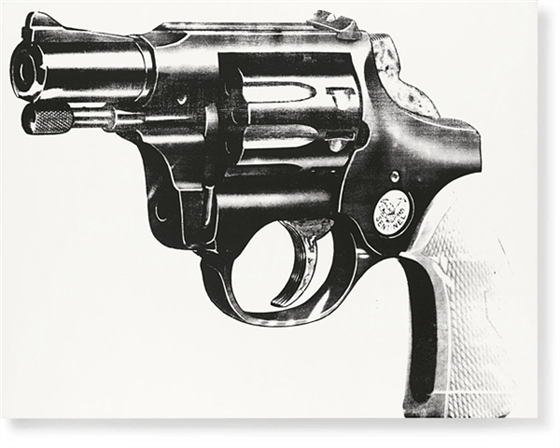
LOSERS
Frank Stella:
I don’t get it. Just when Stella appears to be ripe for a comeback, the art market pulls the proverbial rug out from under him. It’s hard to understand why prime 1960s pictures, such as Double Mitered Maze (est. $1,200,000-$1,800,000) continue to be bought-in. It seems like the Stella market never recovered from the artist’s much-derided second retrospective at MoMA in 1987. Stella’s work from the late 1950s through the 1970s remains beautiful and significant. It deserves a better fate.

Damien Hirst:
The world’s most successful living artist is cited here for lack of participation. You would think with $200 million worth of his work sold only seven months ago, there would be plenty of sellers looking to cash in. Certainly, you would expect at least one major Hirst to appear between the two major houses. Instead, there were only “day sale” quality Hirsts and not a single million-dollar lot. What happened? While we haven’t heard the last from the artist, you sense that his market may have overreached and burnt itself out. At least for now.

Robert Gober:
It was not a good week for Robert Gober, who saw two major sculptures not sell. Sotheby’s Untitled (a male butt with musical notes) was one of the best Gobers ever to appear at auction. Unfortunately, it carried an estimate of $2,500,000-$3,500,000 -- an estimate that was a year old. Had the owner lowered his expectations by a million dollars, the work probably would have sold. Over at Phillip’s, another Untitled work -- a replica of a box of Farina with an open-mouthed young boy on the front -- carried the same estimate and experienced the same results -- proving how little control an artist has over the perception of his market. No matter, Gober will bounce back.
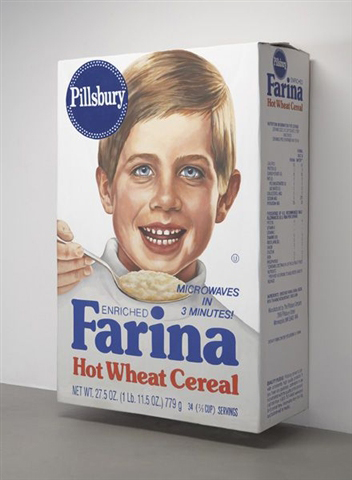
Chinese Art:
While it’s always dangerous to lump together all the artists from an entire country (not to mention the most populous country in the world), in this case it’s apropos. The few Chinese pictures to grace the evening sales did only so-so -- gone were the speculators who drove this market. Those who participated at the beginning, and sold relatively early, cleaned up (with a new market it’s always better to go second than first). While it’s wonderful that the political climate in China relaxed enough to allow freedom of expression, the art it produced was completely derivative of Western painting. There is nothing innovative or original about Chinese contemporary art. This market will continue to fade.

The real winners at auction last week? The collectors who managed to hold on to their paintings, resisting the urge to sell during the recession. Despite every economic indicator that hard assets, such as collectibles, were going down in value, first-rate pictures by classic names held up better than expected. However, New York Times auction reporter Carol Vogel wrote that there was no reason to celebrate because the total gross sales were so much lower than those of May 2008 -- partially missing the point. Dollar volume may have been down due to lower prices, fewer lots and a pronounced absence of mega-lots. But the art that did appear sold and found its level, setting a floor for prices to eventually recover.

If you exclude works by Alexander Calder, prices in general feel like they’ve receded 33 percent from their high water mark in London in June 2007 -- a far cry from the 66 percent drop during the hellish market demise of 1990-93. While the recovery may be slow, and prices may remain at their current level for the next few years, who cares? The numbers are high enough. Besides, it allows those who have been standing on the sidelines to get back into the game. Maybe even new buyers will be attracted because the art market has stabilized.

That having been said, let’s examine some of the individual artists who fared well at the May auctions, and a few who didn’t. Remember, the real test of any market is what happens when times are difficult. Whoever retains the most value in a down market will exponentially go up the most when things improve. Conversely, the same holds true for artists who depreciate the most during a recession.
WINNERS
Cecily Brown:
When Brown’s triptych Girls Eating Birds exceeded its estimate during a mediocre sale at Sotheby’s on May 12, 2009, it only reinforced her position as a “money artist.” I’ve said it before, and I’ll say it again: Brown can flat-out paint. Her hide-and-seek figures are more than mere armatures to hang paint on -- they create a compelling narrative about relationships. Given her youth (she’s still improving), strong gallery representation (Gagosian) and consistency on the resale market, I’d be hard-pressed to find a more reliable bet.

Dan Colen:
Though still unproven at auction over time, Colen is one of a handful of really young artists who might have some staying power. Witness the number of youthful dealers, as reported by the press, who pursued the unfortunately titled Untitled (Blow Me) at Sotheby’s on May 12. A seasoned collector should always be aware of what the next generation of dealers are supporting at auction. Colen is a good example.

Alexander Calder:
The winner and still champion. When times get tough, the tough go shopping and buy Calder. During the 1990s recession, Calder’s prices probably held up the best. This time around, Calder exceeded expectations, creating some very happy consignors. It may be a simplistic statement, but his work appeals to all ages and levels of sophistication. Early Calders, which incorporate wooden elements, always sparkle at auction -- as was the case yet again in this week’s sales.

Richard Diebenkorn:
Ocean Park No. 117 represented the “perfect Diebenkorn” from his most desired series. This painting has it all: color, structure and, most important, apartment-size scale. The market responded accordingly with a huge price ($6.5 million). Diebenkorn’s work continues to look better over time. Once European collectors and curators get over their prejudice (they accuse him of being overly influenced by Matisse), and view him more as an American who absorbed Matisse, look out.

Andy Warhol:
Surprise. Though Warhol’s prices have dipped with the rest of the market, his work did well during this round of sales, despite the lack of a single star-quality painting.

Even though some of the estimates proved aggressive, others, like that assigned to the large Gun -- estimated at $2,200,000-$2,800,000, and sold for $3,106,500 with premium -- confirmed the auction houses’ confidence. As the most widely collected artist, Warhol continues to be the most accurate market gauge, when it comes to judging the overall health of the art business. If I were a doctor, who had just taken the market’s temperature based on Warhol’s recent prices, I would say, “The patient is resting comfortably.”

LOSERS
Frank Stella:
I don’t get it. Just when Stella appears to be ripe for a comeback, the art market pulls the proverbial rug out from under him. It’s hard to understand why prime 1960s pictures, such as Double Mitered Maze (est. $1,200,000-$1,800,000) continue to be bought-in. It seems like the Stella market never recovered from the artist’s much-derided second retrospective at MoMA in 1987. Stella’s work from the late 1950s through the 1970s remains beautiful and significant. It deserves a better fate.

Damien Hirst:
The world’s most successful living artist is cited here for lack of participation. You would think with $200 million worth of his work sold only seven months ago, there would be plenty of sellers looking to cash in. Certainly, you would expect at least one major Hirst to appear between the two major houses. Instead, there were only “day sale” quality Hirsts and not a single million-dollar lot. What happened? While we haven’t heard the last from the artist, you sense that his market may have overreached and burnt itself out. At least for now.

Robert Gober:
It was not a good week for Robert Gober, who saw two major sculptures not sell. Sotheby’s Untitled (a male butt with musical notes) was one of the best Gobers ever to appear at auction. Unfortunately, it carried an estimate of $2,500,000-$3,500,000 -- an estimate that was a year old. Had the owner lowered his expectations by a million dollars, the work probably would have sold. Over at Phillip’s, another Untitled work -- a replica of a box of Farina with an open-mouthed young boy on the front -- carried the same estimate and experienced the same results -- proving how little control an artist has over the perception of his market. No matter, Gober will bounce back.

Chinese Art:
While it’s always dangerous to lump together all the artists from an entire country (not to mention the most populous country in the world), in this case it’s apropos. The few Chinese pictures to grace the evening sales did only so-so -- gone were the speculators who drove this market. Those who participated at the beginning, and sold relatively early, cleaned up (with a new market it’s always better to go second than first). While it’s wonderful that the political climate in China relaxed enough to allow freedom of expression, the art it produced was completely derivative of Western painting. There is nothing innovative or original about Chinese contemporary art. This market will continue to fade.

Wednesday, April 08, 2009
THE STORM THAT NEVER CAME
by Richard Polsky
Like a classic Mexican standoff, the market for blue-chip art has come to a virtual standstill. The storyline goes something like this: The only speculators/collectors willing to sell want yesterday’s prices. The only speculators/collectors open to buying want today’s prices. That being the case, precious few deals are getting done.
With the price declines at last November’s auctions, collectors and dealers alike were licking their chops at the thought of scooping up art at 50 cents on the dollar. Fear was in the air. Prior to the sale, auction house experts were actually telling collectors (off the record) what it would take to secure certain guaranteed paintings. After the sale, Sotheby’s and Christie’s public relations departments did their best to put a positive spin on the results. But veteran collectors weren’t buying it. They were too busy plotting how to get that $5 million Mark Rothko painting on paper for only $2.5 million -- or less.

On a personal level, my first thought was that my Andy Warhol green Fright Wig that I sold for $375,000 in May, 2005 -- which would have been valued at several million dollars during the market’s acme (London sales of June 2007) -- was back to being worth around $375,000 again. These thoughts were confirmed by the recent results brought by a triumvirate of small "Fright Wig" paintings that averaged a little over $400,000 apiece, at Sotheby’s February 2009 sales in London.
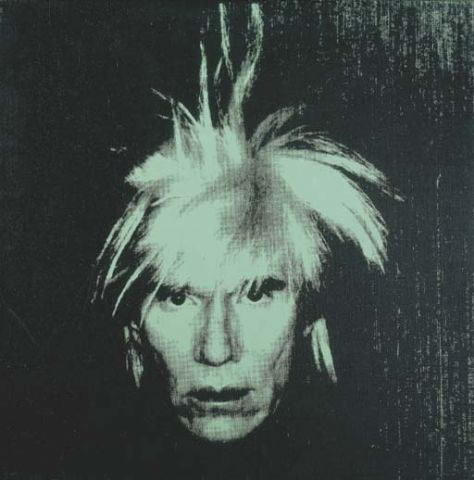
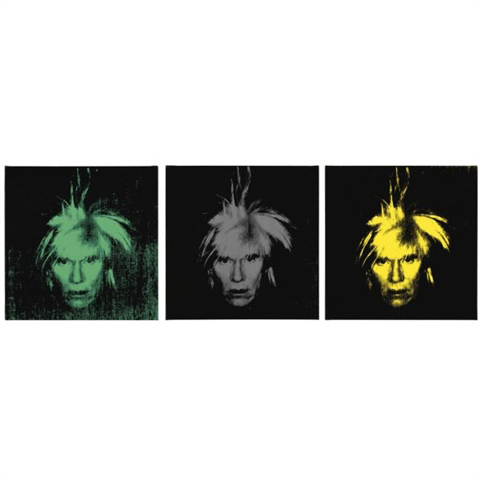
But back to the present. In any market, it is a proven fact that you make your best deals when others are desperate. If you are in a strong cash position and have the courage of your convictions, you often end up looking brilliant five years down the road. After the November 2008 sales, which saw Lehman Brothers’ Richard and Kathy Fuld dumping their Abstract Expressionist drawings, it seemed certain that other high-profile collectors would follow suit. The talk was that the auction houses would be offered so much material, that at long last they could afford to be more selective. Finally, the market was going to be about connoisseurship. Yeah, right.
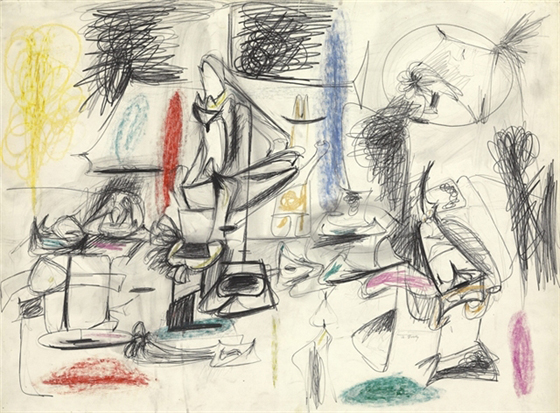
As the Great Recession enters its fifth month, none of the above predictions have come to pass. Instead, we are learning that most serious collectors have deeper pockets than we thought. Though their securities portfolios are obviously lower, and the value of their home(s) have gone down, they’re not looking to sell their art. What they’ve come to realize is that if they bought when prices were low, they’re still far ahead of the game. If they acquired their collection over the last few years, they may have overpaid, but so what? Even though art is now considered an asset, it remains an enjoyable one. As the music executive Ahmet Ertegun once told then-aspiring collector David Geffen, "A painting is the nicest thing you can have in your house."

It is the dealers who are currently in trouble, and to a lesser degree the auction houses. The key is being able to hang on until the end of the year. The likely scenario is that the gears to a gradual art-market recovery are already turning. The upcoming May 2009 auctions will be small, with paintings carrying low estimates. Chances are good that almost everything will sell. A new level of prices will be established. At that point, sellers will reluctantly accept these adjustments. By the end of 2009, art will be trading more freely again.

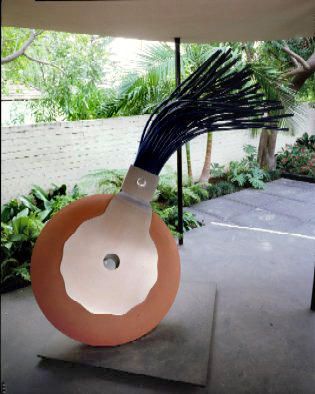
Not that it’s going to be easy. Great things have not depreciated that much. Witness last November’s record price for a Joseph Cornell "Pharmacy" box. Whoever bought it knows he paid too much. But he still did the right thing. The art market is unlikely to see another box that important for the next 20 years. Collectors who "want something for nothing" would do well to keep this example in mind. You are still going to have to pay up for anything wonderful.
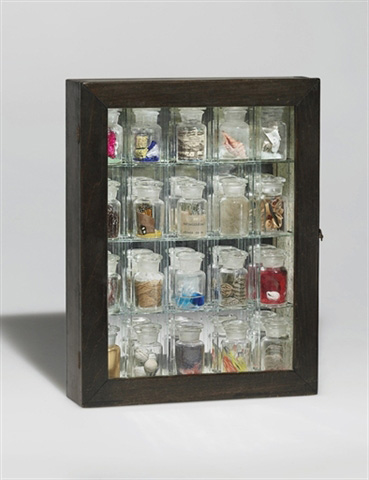
The other half of the equation is that it is still just as difficult to buy a work on the primary market by artists who were sought after during the boom. Recently, I called a colleague at the Gagosian Gallery with what I thought was welcome news. I had lined up a bona fide collector who wanted to purchase a portrait by Glenn Brown. Given that Brown is a gallery artist, whose primary market prices are in the $750,000 range, I expected to be greeted like a savior. Instead, my gallery contact gave me the usual song and dance about there being nothing available. While he was probably telling the truth, his inability to produce a painting illustrated that the demand for top living artists remains strong.

The best thing dealers can do right now is keep their overhead low and their spirits up. Spend time developing personal projects. Write the book you’ve always wanted to write. Go on safari to Africa. Enjoy your life. The art market standoff isn’t forever. Normally, combining vision with hard work is the answer to everything in business. But not this time. Right now, the answer is patience.
Like a classic Mexican standoff, the market for blue-chip art has come to a virtual standstill. The storyline goes something like this: The only speculators/collectors willing to sell want yesterday’s prices. The only speculators/collectors open to buying want today’s prices. That being the case, precious few deals are getting done.
With the price declines at last November’s auctions, collectors and dealers alike were licking their chops at the thought of scooping up art at 50 cents on the dollar. Fear was in the air. Prior to the sale, auction house experts were actually telling collectors (off the record) what it would take to secure certain guaranteed paintings. After the sale, Sotheby’s and Christie’s public relations departments did their best to put a positive spin on the results. But veteran collectors weren’t buying it. They were too busy plotting how to get that $5 million Mark Rothko painting on paper for only $2.5 million -- or less.

On a personal level, my first thought was that my Andy Warhol green Fright Wig that I sold for $375,000 in May, 2005 -- which would have been valued at several million dollars during the market’s acme (London sales of June 2007) -- was back to being worth around $375,000 again. These thoughts were confirmed by the recent results brought by a triumvirate of small "Fright Wig" paintings that averaged a little over $400,000 apiece, at Sotheby’s February 2009 sales in London.


But back to the present. In any market, it is a proven fact that you make your best deals when others are desperate. If you are in a strong cash position and have the courage of your convictions, you often end up looking brilliant five years down the road. After the November 2008 sales, which saw Lehman Brothers’ Richard and Kathy Fuld dumping their Abstract Expressionist drawings, it seemed certain that other high-profile collectors would follow suit. The talk was that the auction houses would be offered so much material, that at long last they could afford to be more selective. Finally, the market was going to be about connoisseurship. Yeah, right.

As the Great Recession enters its fifth month, none of the above predictions have come to pass. Instead, we are learning that most serious collectors have deeper pockets than we thought. Though their securities portfolios are obviously lower, and the value of their home(s) have gone down, they’re not looking to sell their art. What they’ve come to realize is that if they bought when prices were low, they’re still far ahead of the game. If they acquired their collection over the last few years, they may have overpaid, but so what? Even though art is now considered an asset, it remains an enjoyable one. As the music executive Ahmet Ertegun once told then-aspiring collector David Geffen, "A painting is the nicest thing you can have in your house."

It is the dealers who are currently in trouble, and to a lesser degree the auction houses. The key is being able to hang on until the end of the year. The likely scenario is that the gears to a gradual art-market recovery are already turning. The upcoming May 2009 auctions will be small, with paintings carrying low estimates. Chances are good that almost everything will sell. A new level of prices will be established. At that point, sellers will reluctantly accept these adjustments. By the end of 2009, art will be trading more freely again.


Not that it’s going to be easy. Great things have not depreciated that much. Witness last November’s record price for a Joseph Cornell "Pharmacy" box. Whoever bought it knows he paid too much. But he still did the right thing. The art market is unlikely to see another box that important for the next 20 years. Collectors who "want something for nothing" would do well to keep this example in mind. You are still going to have to pay up for anything wonderful.

The other half of the equation is that it is still just as difficult to buy a work on the primary market by artists who were sought after during the boom. Recently, I called a colleague at the Gagosian Gallery with what I thought was welcome news. I had lined up a bona fide collector who wanted to purchase a portrait by Glenn Brown. Given that Brown is a gallery artist, whose primary market prices are in the $750,000 range, I expected to be greeted like a savior. Instead, my gallery contact gave me the usual song and dance about there being nothing available. While he was probably telling the truth, his inability to produce a painting illustrated that the demand for top living artists remains strong.

The best thing dealers can do right now is keep their overhead low and their spirits up. Spend time developing personal projects. Write the book you’ve always wanted to write. Go on safari to Africa. Enjoy your life. The art market standoff isn’t forever. Normally, combining vision with hard work is the answer to everything in business. But not this time. Right now, the answer is patience.
Monday, March 02, 2009
THE PRICING ISSUE
by Richard Polsky
Exhibit A: The biggest issue facing the art business is that no one knows what anything is worth. Yet everyone I talk to seems to know exactly what their property is worth -- it’s still worth what it was before the crash!
The other day, I had a request from a collector who wanted a commercial yet attractive Andy Warhol print -- Turtle (1985), more commonly called Sea Turtle. With that in mind, I placed a call to an equally commercial gallery in Los Angeles, who boasts one of this country’s largest inventories of Warhol prints. A brief conversation with the director revealed that yes, in fact, they did have a Sea Turtle silkscreen for sale. I was told they wanted a net of $16,000.
I responded, "Sounds like the old price."
The gallery director said, "It is."

We then went on to have an asinine conversation about how his gallery bought the print at the height of the market, for $16,000, and he refused to take a loss. Ditto for much of the rest of his inventory. I countered, "How do you expect me to pay a former retail price, when the market might be down 50 percent?" The gallery director’s rebuttal? Something to the effect of, "It’s up to you if you want to pay it or not."
I said, "Maybe my thinking is flawed, but I don’t want to pay twice what something might be worth. Assuming there are others who think like me, how do you expect to make a living?"
At this point, the discussion took off into the ozone. The director said, "We’ve been offering to buy A+ paintings from clients who are desperate for cash. But, of course, we expect to pay very little. That way, we can pass along good deals to our clients who are still buying."
I said to him, "Let me try and put this into perspective. You want me and my client to overpay for inventory that you overpaid for. Yet you personally want to be able to buy at the new heavily discounted prices -- probably from the same people you sold the work to originally at the former high prices?"
There was silence in Los Angeles.
Unfortunately, most of what I’ve been hearing has been only a slight variation of the above "pretzel logic." It’s kind of like someone who has their home on the market and refuses to adjust his price to the new reality. The seller has an emotional attachment to his property, leading him to believe that his home is different. It hasn’t gone down in value because it’s such a beautiful house, while his neighbors’ homes have declined in price because they’re not as nice as his.
Exhibit B: The second biggest issue facing the art market is lying. That is to say, dealers who lie about what they paid for something. This is exactly what I experienced the other day when I went searching for a very specific painting from Warhol’s late "Advertising" series. While scanning Artnet’s 53 pages of Warhol listings, I was actually able to track down the very painting my client wanted. Within minutes of sending an inquiry to the dealer offering it, I received the following response, "We paid $200,000 for the picture but are willing to accept $140,000."
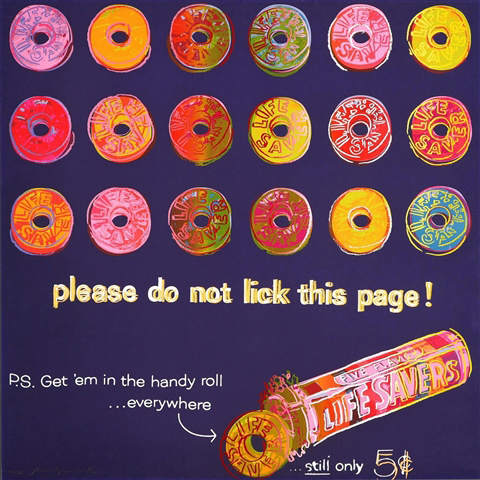
On the surface, this seemed like a magnanimous offer. Here was a colleague that I never met, sharing the cost of his inventory with me, as if we were lifelong partners. The implied message was look how open and honest I am. Now, I suppose this person could be telling the truth. But I doubt it. If we agree that the art market’s current demise began with the November 2008 New York auctions, then we are only three months into the industry’s recession. I found it difficult to believe that someone was willing lose $60,000 this quickly. Sure, they might be desperate. But the problem with that theory is that if they were really starved for cash, they would have to be more realistic and price the painting at its current fair market value: under $100,000. While the aforementioned "Exhibit A" anecdote represents one extreme position ("I won’t take a loss"), here’s the other end of the spectrum.

With the May auctions less than three months away, now is the time for dealers to be honest with themselves. If they have any real hope of selling their inventory, they need to cut out the rhetoric. If you believe that the auction house strategy this spring is going to be smaller sales, rock bottom estimates, and a "sell it at any price -- but sell it!" mentality, you have to beat the auctions at their own game. If you’re a collector, you need to go to the dealer and make an offer based on what you think the painting will be worth once the May sales conclude. If you’re a dealer, you need to price your inventory the same way. Or you can you expect the end results from Exhibits A & B -- neither dealer made a sale.

Exhibit A: The biggest issue facing the art business is that no one knows what anything is worth. Yet everyone I talk to seems to know exactly what their property is worth -- it’s still worth what it was before the crash!
The other day, I had a request from a collector who wanted a commercial yet attractive Andy Warhol print -- Turtle (1985), more commonly called Sea Turtle. With that in mind, I placed a call to an equally commercial gallery in Los Angeles, who boasts one of this country’s largest inventories of Warhol prints. A brief conversation with the director revealed that yes, in fact, they did have a Sea Turtle silkscreen for sale. I was told they wanted a net of $16,000.
I responded, "Sounds like the old price."
The gallery director said, "It is."

We then went on to have an asinine conversation about how his gallery bought the print at the height of the market, for $16,000, and he refused to take a loss. Ditto for much of the rest of his inventory. I countered, "How do you expect me to pay a former retail price, when the market might be down 50 percent?" The gallery director’s rebuttal? Something to the effect of, "It’s up to you if you want to pay it or not."
I said, "Maybe my thinking is flawed, but I don’t want to pay twice what something might be worth. Assuming there are others who think like me, how do you expect to make a living?"
At this point, the discussion took off into the ozone. The director said, "We’ve been offering to buy A+ paintings from clients who are desperate for cash. But, of course, we expect to pay very little. That way, we can pass along good deals to our clients who are still buying."
I said to him, "Let me try and put this into perspective. You want me and my client to overpay for inventory that you overpaid for. Yet you personally want to be able to buy at the new heavily discounted prices -- probably from the same people you sold the work to originally at the former high prices?"
There was silence in Los Angeles.
Unfortunately, most of what I’ve been hearing has been only a slight variation of the above "pretzel logic." It’s kind of like someone who has their home on the market and refuses to adjust his price to the new reality. The seller has an emotional attachment to his property, leading him to believe that his home is different. It hasn’t gone down in value because it’s such a beautiful house, while his neighbors’ homes have declined in price because they’re not as nice as his.
Exhibit B: The second biggest issue facing the art market is lying. That is to say, dealers who lie about what they paid for something. This is exactly what I experienced the other day when I went searching for a very specific painting from Warhol’s late "Advertising" series. While scanning Artnet’s 53 pages of Warhol listings, I was actually able to track down the very painting my client wanted. Within minutes of sending an inquiry to the dealer offering it, I received the following response, "We paid $200,000 for the picture but are willing to accept $140,000."

On the surface, this seemed like a magnanimous offer. Here was a colleague that I never met, sharing the cost of his inventory with me, as if we were lifelong partners. The implied message was look how open and honest I am. Now, I suppose this person could be telling the truth. But I doubt it. If we agree that the art market’s current demise began with the November 2008 New York auctions, then we are only three months into the industry’s recession. I found it difficult to believe that someone was willing lose $60,000 this quickly. Sure, they might be desperate. But the problem with that theory is that if they were really starved for cash, they would have to be more realistic and price the painting at its current fair market value: under $100,000. While the aforementioned "Exhibit A" anecdote represents one extreme position ("I won’t take a loss"), here’s the other end of the spectrum.

With the May auctions less than three months away, now is the time for dealers to be honest with themselves. If they have any real hope of selling their inventory, they need to cut out the rhetoric. If you believe that the auction house strategy this spring is going to be smaller sales, rock bottom estimates, and a "sell it at any price -- but sell it!" mentality, you have to beat the auctions at their own game. If you’re a collector, you need to go to the dealer and make an offer based on what you think the painting will be worth once the May sales conclude. If you’re a dealer, you need to price your inventory the same way. Or you can you expect the end results from Exhibits A & B -- neither dealer made a sale.

Subscribe to:
Posts (Atom)
Blog Archive

- Richard Polsky
- is the author of the forthcoming I Sold Andy Warhol Too Soon (Other Press), is a private dealer in Sausalito. Questions or comments can be directed to: Richard@PolskyArt.com
